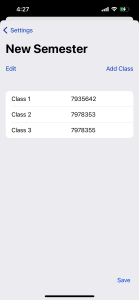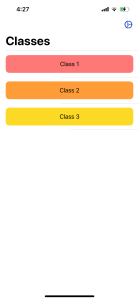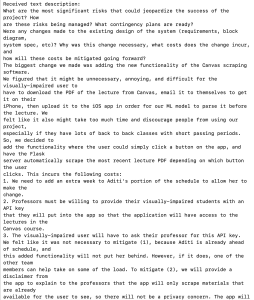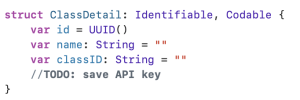This week, I worked mostly on creating the settings functionality, as well as allowing users to add as many classes as they wanted in a semester. When they enter a new semester, they must re-update these fields. It was difficult to figure out how to allow data to persist across sessions, and the Swift tutorials I followed weren’t working. My solution was just to create a JSON saved to the user’s phone file system, and have all of the information update that JSON.
This is the settings screen:

When you click on New Semester, the user can enter in the corresponding info:

Here is the UI, which uses a mix of high contrast, accessible colors:

When “class 2” is clicked, this is the retrieved result, which is the first slide of the most recently uploaded pdf under the “lectures” module. Currently, it’s printed to the XCode terminal:

Here is the Canvas account I created, with the three test courses:

Here is the userData struct, which is saved to the user’s phone files:

name is the name of the class, and classID is the id of the Canvas course, which is viewable in the Canvas link for the course. The URL for Class 1 is https://canvas.instructure.com/courses/7935642, and the corresponding classID is 793562. The functionality for the user setting an API key will be done later, and must be present across app sessions as well.
When the user saves the settings, and clicks on the button, the first slide will be outputted and read out loud. When we finish the ML model and are able to receive communication from the Jetson, we’ll change it so that the output will be whatever slide the professor is on.
Next week, I plan on helping Nithya and Jaspreet integrate with my Flask server, and reach out to start finding visually-impaired volunteers to test our product. I am still ahead of schedule, and am almost completely finished with my subsystem.
